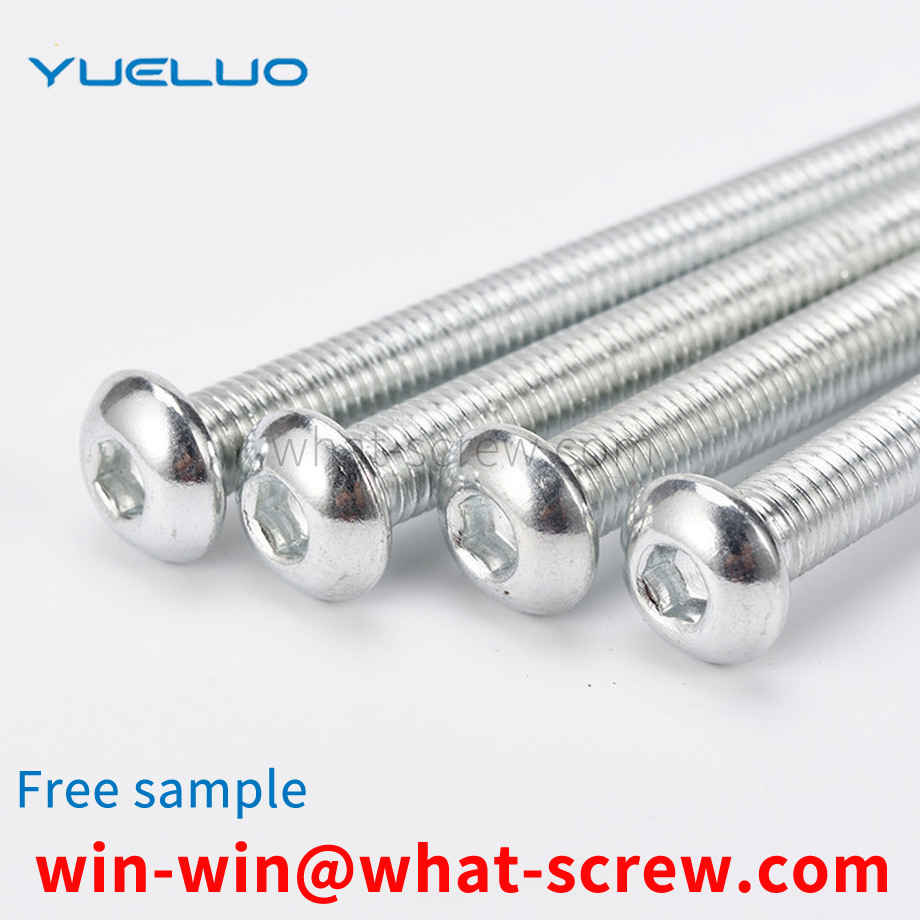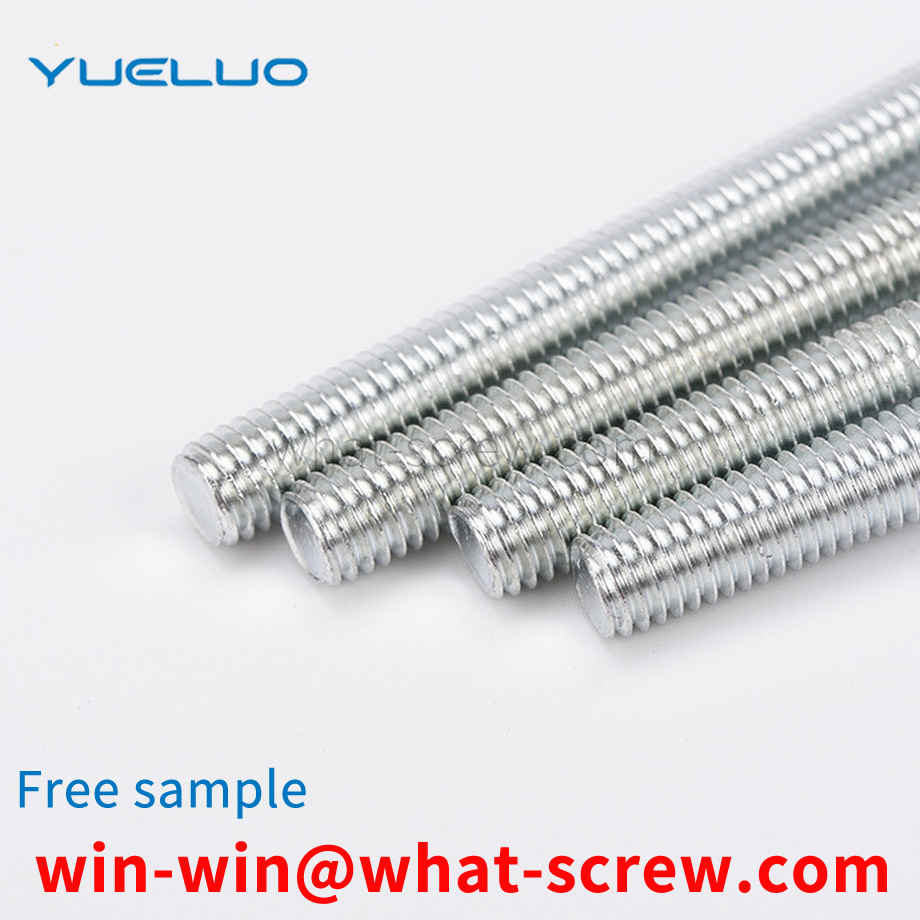The use of stainless steel screw lines: The hardness of stainless steel screw lines causes them to have different uses. Generally, they are used as small screws in life, but also as car screws and compression screws. They are widely used in normal life. Types of stainless steel screw lines: In appearance, screw lines are generally divided into fog surface spring lines and bright surface screw lines. The hardness of matte surface screw lines is higher than that of bright surface screw lines. For products with low appearance requirements and relatively high elasticity requirements. Paper, oxalic acid, fertilizer and other production equipment; photography, food industry, facilities in coastal areas, ropes, CD rods, bolts, nuts.
As one of the indispensable parts in automobiles, the main function of the screw is to fix the parts with through holes and the parts with screw holes together. The existing automobile screws include a screw rod and a head, and the thread pitches on the screw rod are equal. , When in use, directly screw the screw into the screw hole, so as to connect and fix the two parts, this connection method, however, when the screw has different thread spacing or part of the thread is damaged, the thread cannot be repaired and replaced. Then the whole screw will be scrapped.
The quality of electroplating is measured primarily by its corrosion resistance, followed by appearance. Corrosion resistance is to imitate the working environment of the product, set it as the test condition, and perform a corrosion test on it. The quality of electroplating products shall be controlled from the following aspects: 1. Appearance: Partial uncoated, scorched, rough, gray, peeling, crusted, and obvious stripes are not allowed on the surface of the product, and pinholes, pitting, and black plating are not allowed. Slag, loose passivation film, cracks, peeling off and serious passivation marks. 2. Coating thickness: The operating life of fasteners in corrosive atmosphere is proportional to its coating thickness. The general recommended thickness of economical electroplating coating is 0.00015in ~ 0.0005in (4 ~ 12um). Hot-dip galvanizing: the standard average thickness is 54 um (43 um for diameter ≤ 3/8), and the minimum thickness is 43 um (37 um for diameter ≤ 3/8). 3. Coating distribution: With different deposition methods, the aggregation method of the coating on the surface of the fastener is also different. During electroplating, the coating metal is not uniformly deposited on the peripheral edge, and a thicker coating is obtained at the corners. In the threaded portion of the fastener, the thickest coating is located on the thread crest, gradually thinning along the flank of the thread, and the thinnest deposit is at the bottom of the thread, while hot dip galvanizing is just the opposite, the thicker coating is deposited on the inside corners and On the bottom of the thread, mechanical plating tends to deposit the same metal as hot-dip plating, but is smoother and has a much more uniform thickness over the entire surface [3]. 4. Hydrogen embrittlement: During the processing and processing of fasteners, especially in the pickling and alkali washing before plating and the subsequent electroplating process, the surface absorbs hydrogen atoms, and the deposited metal coating then traps hydrogen. When the fastener is tightened, the hydrogen is transferred towards the most stressed parts, causing the pressure to build up beyond the strength of the base metal and producing microscopic surface cracks. Hydrogen is particularly active and quickly seeps into the newly formed fissures. This pressure-rupture-penetration cycle continues until the fastener breaks. Usually occurs within a few hours after the first stress application. To eliminate the threat of hydrogen embrittlement, fasteners are heated and baked as soon as possible after plating to allow hydrogen to seep out of the plating, typically at 375-4000F (176-190C) for 3-24 hours. Since mechanical galvanizing is non-electrolyte, this virtually eliminates the threat of hydrogen embrittlement, which exists in galvanizing using electrochemical methods. In addition, due to engineering standards, it is forbidden to hot-dip galvanize fasteners with hardness higher than HRC35 (Imperial Gr8, metric 10.9 and above). Therefore, hydrogen embrittlement rarely occurs in hot-dip plated fasteners. 5. Adhesion: Cut or pry off with a solid tip and considerable pressure. If, in front of the blade tip, the coating peels off in flakes or skins, exposing the base metal, the adhesion shall be considered insufficient.
As the preferred embodiment of the above-mentioned embodiment, the motor 41 is provided with a thruster 46 that moves the cutting wheel 42 toward the conveying device 3. When the screw needs to be slotted, the thruster 46 generates a thrust toward the screw, and the motor 41 generates a thrust in the direction of the screw. Under the action, the groove is moved along the track 47 toward the screw. The other end of the motor 41 is provided with a bearing 45, and the output end of the motor is provided with a special-shaped wheel 44. The special-shaped wheel 44 is geared to the bearing 45. The wheel 42 is close to or away from the conveying device 3. When the grooving is completed, the special-shaped wheel 44 rotates and drives the bearing 45 to generate the opposite force from the above-mentioned thrust, so that the motor 41 moves back to the original position along the track 52.
The shaft circlip is a mechanical part installed on the slotted shaft and used as a fixed part for the movement of the hole. The inner diameter of the shaft circlip is slightly smaller than the mounting shaft diameter. When installing the shaft circlip, use the circlip pliers, insert the pliers into the pliers hole of the retaining ring, expand the retaining ring, and then put the shaft circlip into the shaft groove.
We have many years of experience in the production and sales of screws, nuts, flat washers, etc. The main products are: Rose flat head bolts, anti-theft machine tooth bolts, pattern elastic gaskets, round head Phillips screws and other products, we can provide you with suitable screws for you. Firmware Solutions.



















 Service Hotline
Service Hotline




